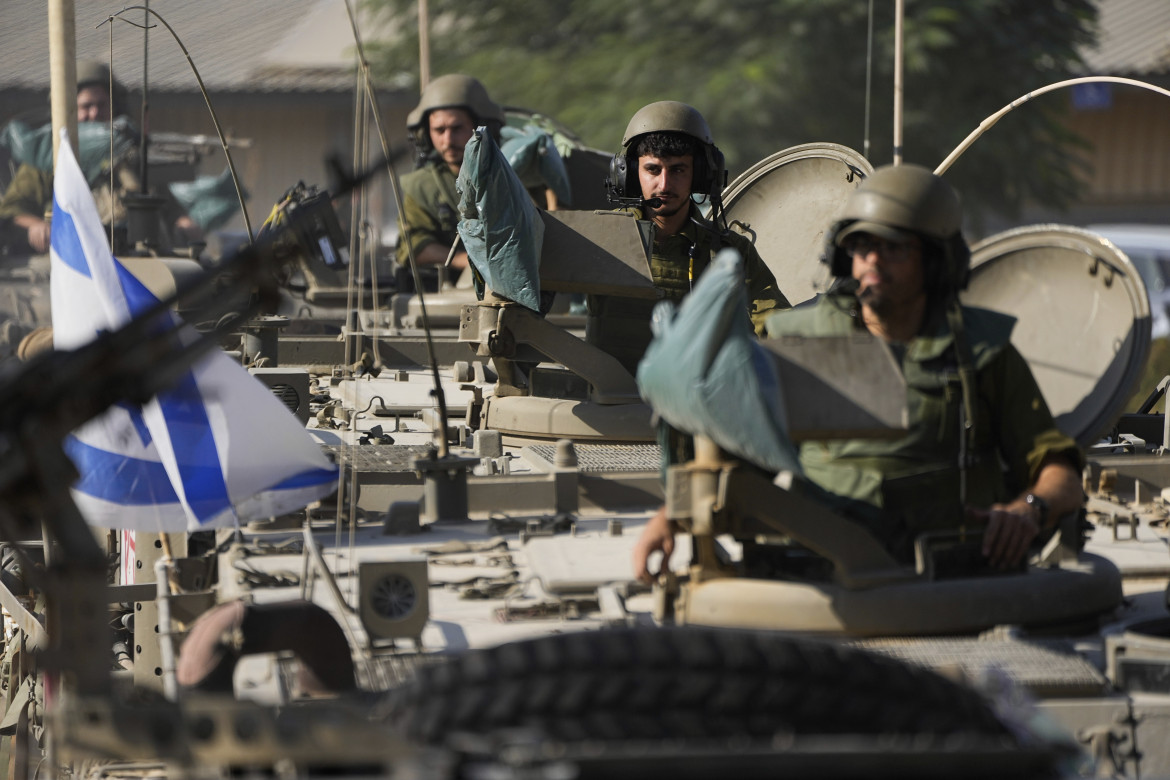Reportage
In the kibbutz of the massacre: Walls riddled with holes, suspended time, and lives interrupted
Kfar Aza was among the main targets of Hamas attacks on October 7. The stench of decomposition is unbearable. The Israelis let us in for ‘people in the West to see what they did to us.’

“We’ll be exposed on this entire strip of land, so keep an eye out,” a former Israeli soldier tells us before we head south. He points to the western side of the Kfar Aza kibbutz, one of the places hardest hit by the attack on Saturday, October 7. In that settlement, children were found slaughtered, and, according to an estimate by the Israeli army, at least 40 of the Israeli residents were killed and 60 were kidnapped. It’s one of the places closest to the “barrier” that delimits Israeli territory from Gaza, and access has been restricted since the day of the assault. But now, some former soldiers wanted “people in the West to see what they did to us,” so they allowed us to go there, escorted by two cars.
The road is lined on both sides with fields, and there are checkpoints in several places, but the military positions are out in the open. Entire units are deployed in plain sight among cultivated fields. It’s obvious that the soldiers are not afraid of attacks from the air. A little further on, we understand why: some kind of lifting arm is holding up an antenna. This is one of the nodes that form the complex defense system called the Iron Dome. Without these antennas to exchange information, the surface-to-air missiles wouldn’t know where to fly to intercept the rockets. The system works perfectly: one sees the trail in the sky (or multiple trails, depending on the size of the attack) and then a wad of smoke accompanied by a boom.
Today we’re hearing more of them than usual; this might be because we’re close to the front lines. Even though there’s no actual front, for now. In any case, artillery and anti-aircraft systems are keeping very busy, and over a short time we see four separate Israeli F-15s, flying low. “Are they coming back from Gaza?” we ask, imagining what kind of damage the bombs dropped from such a warplane might cause. “Not necessarily, maybe they’re just on reconnaissance,” the military men tell us.
Near the Saad kibbutz, the road stops in front of a large gate manned by armed guards. Once we pass through, the landscape changes: on one side there are iron fences (probably electrified) and barbed wire, on the other Mediterranean scrub and more or less expensive farmhouses. Then another gate, as large as the first one, and we are at Kfar Aza. Here the iron fences are blackened and bent, a sign that there was an attempt to breach them. Inside, signs of the battle are everywhere. Walls riddled with shrapnel, some roofs pierced by rockets, burned out cars, and a stench of dead bodies that accompanies you most of the way between the single-story houses.
Most shocking, however, is the silence. The doors of the houses are all open; inside, time has frozen in place. In one house, the ceiling fans are still on; in another, the half-closed refrigerator is leaking water. A third has colorful streamers and some children’s snacks on the table: there was probably a birthday party or something similar. In the hallways, family photos and all kinds of everyday items lie scattered on the floor. One house in particular is infested with flies. The stench of decomposition is unbearable. There are traces of blood on the floor and walls, and, in the bedroom, a dead dog is lying in a black puddle surrounded by a cloud of insects. One of the ex-military men is about to throw up and has to leave.
Finally, we reach the western edge. A small post of Israeli soldiers is guarding a ripped-up barrier among the bushes. Gaza is straight ahead. A mortar flies overhead, its hissing clearly audible, and we run to hide behind the charred cars. When the danger has gone, a thick black cloud rises from the city in the distance: Gaza has been hit again. There’s no “dome” there, iron or otherwise, to protect against incoming fire.
Originally published at https://ilmanifesto.it/nel-kibbutz-della-strage-muri-crivellati-tempo-sospeso-e-vite-interrotte on 2023-10-18
